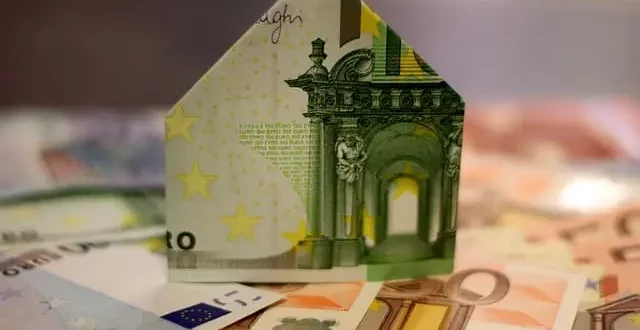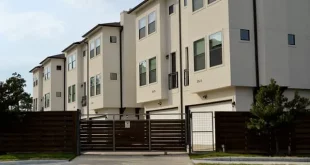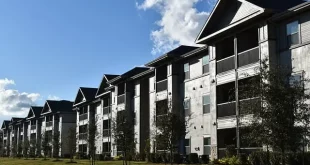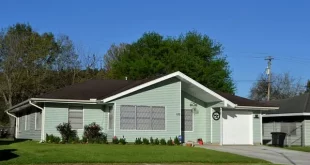Imaxshift.com – How much does it cost to construct a house in Australia? Constructing a house is a significant financial and emotional investment, requiring a deep understanding of the costs involved, including land acquisition, materials, labor, and additional features.
The total cost of building a house varies widely based on location, size, design, and the quality of materials used. Based on recent data, the construction of a new home can range from modest to luxury, influenced by numerous factors that contribute to the overall expense.
Is Building a House Cheaper Than Buying In Australia?
Determining whether building a house is cheaper than buying one in Australia depends on various factors, including location, market conditions, and personal preferences. Based on data from 2024 and predictions for 2025, the decision is nuanced and varies by city.
In 2023, the costs of building a house included purchasing land and construction costs. These expenses varied significantly across different cities. For example, in Sydney, combining land and construction costs could amount to approximately $1,014,763.50, whereas the median cost of buying an established property, including stamp duty, was around $1,055,131. This indicates that in Sydney, building was marginally cheaper than buying. Conversely, in cities like Perth and Canberra, buying an established home was significantly cheaper than building a new one, with differences ranging from about $135,567 to $165,567.20 for first home buyers, showing a clear financial advantage to buying over building in these areas.
Looking ahead to 2024, the scenario presents a similar trend where, in most cases, building a house remains cheaper than buying an existing one, with Sydney being an example where building costs were estimated at $858,132.5 compared to buying an existing house at $1,160,000. This trend suggests that for those willing to navigate the complexities of building a home, including managing construction loans and enduring longer timelines for construction, there could be significant savings. However, Perth is noted as an exception where buying might still be cheaper than building.
The choice between building and buying involves more than just cost considerations. Building a home offers customization and energy efficiency but comes with longer timelines and potential stress from managing the construction process. Buying a home provides convenience and quicker settlement, with the trade-off being less personalization and potential for higher upfront costs due to stamp duty and possible renovations or repairs.
Also Read : Can You Build a House For 100k in Australia?
So, How Much Does It Cost to Construct a House in Australia?
The cost of building a house can be broadly categorized into several key areas: foundation, framing, exterior elements, major system installations like plumbing and electrical, interior finishes, and outdoor spaces. The foundation, often the first step, can vary in cost depending on the type used, with slab being the most economical and basements the most expensive. Framing, which creates the home’s structure, can significantly vary in price depending on the complexity and size of the design. Exterior elements such as siding, windows, doors, and roofing further add to the costs, while the installation of plumbing, HVAC, and electrical systems are critical for making the house livable and comfortable.
Interior finishes, including insulation, drywall, flooring, and kitchen and bathroom fixtures, represent a substantial portion of the overall cost, heavily influenced by the quality and luxury of the materials chosen. Additionally, outdoor features like decks, landscaping, and pools can significantly increase the project’s total expense, offering aesthetic and functional benefits but requiring careful budget consideration.
The cost per square foot is a common metric used to estimate construction costs, with national averages providing a rough guideline. However, these averages vary significantly by region due to differences in labor costs, material prices, and regulatory factors. For instance, construction costs in high-demand areas like the Northeast and West of the United States can exceed those in the South or Midwest due to higher land and labor costs.
When planning to build a house, it’s crucial to consider the complete financial picture, including the cost of land, the design and size of the home, the choice between a custom or development lot, and the quality of materials and finishes. It’s also essential to account for additional expenses such as permits, regulatory fees, and the potential need for landscaping, driveways, and utilities connections.
To manage these costs effectively, working with experienced professionals, including architects, builders, and real estate agents, can provide valuable insights and help navigate the complexities of home construction. They can assist in making informed decisions that align with your budget and preferences, ensuring that your new home meets your expectations in terms of design, functionality, and cost.
Also Read : Where Is the Cheapest Place to Build a House in Australia?
What is Most Expensive Part of Building a House in Australia?
Building a house in Australia involves numerous cost factors, making it essential to understand where the bulk of your budget will go. The most expensive parts of building a home can significantly vary based on the choices of materials, the complexity of the design, and the specific needs of your project.
One of the foundational elements that dictate the cost of building a house in Australia is the foundation itself. Given the country’s varied soil conditions, the foundation choice (such as slab-on-ground, strip footings, or piling) is crucial and can be influenced by factors like soil composition, topography, and the house’s size and design. This initial stage sets the tone for the overall structural integrity and cost of your construction project.
Structural elements form another significant portion of the construction budget. These include materials like steel for durability and concrete for structural integrity, with timber also being a popular choice for framing, especially in eastern Australia. The selection of these materials, along with the design’s complexity, impacts the cost.
Roofing is another critical component, with options like asphalt shingles, metal, and tile available to suit Australia’s diverse climate. The roofing material selected must balance cost, durability, and maintenance needs, along with the size and complexity of the roof itself.
The exterior finishes of a house, such as siding, brick, or stucco, greatly affect both the visual appeal and the budget. These finishes must align with the homeowner’s desired aesthetic while considering factors like durability and maintenance.
Interior components, including flooring, cabinets, fixtures, and fittings, offer a wide range of choices and price points. The selection here can significantly influence the overall livability and aesthetic of the home, with costs varying based on material quality and the level of customization.
Mechanical systems, including HVAC, plumbing, and electrical installations, are essential for creating a comfortable living environment. The cost here is affected by the systems’ energy efficiency, size, complexity, and chosen technologies, with energy-efficient options potentially offering long-term savings despite higher initial costs.
In addition to these key components, several other factors can affect the overall cost of building a house in Australia. These include permitting and regulatory requirements, labor costs and contractor fees (which vary across regions), and geographical location, which can influence transportation costs and accessibility.
Also Read : What Is the Cheapest Type of House to Build in Australia?
How Much Does it Cost to Build a 3 Bedroom Brick House in Australia?
To accurately estimate the cost of building a 3-bedroom brick house in Australia in 2024, it’s essential to consider various factors including design, location, and material choices. Costs can vary widely, from $250,000 in regional areas to over $900,000 in major cities, depending on these factors.
For a more accurate estimate, it’s advised to consult with several builders to get a range of quotes and consider all related expenses, including council permits and potential unforeseen costs. Opting for simpler designs and affordable materials can help reduce costs, as can building in a less expensive location or considering prefabricated homes. It’s also crucial to stay informed about market trends, such as the demand for sustainable and energy-efficient homes, which could influence overall costs but offer long-term savings.
Also Read : What Is the Average Cost to Build a House in Australia?
How Much Does It Cost to Build a 4 Bedroom House in Australia?
Building a 4-bedroom house in Australia involves several cost factors, including home design (custom or pre-existing), size, number of storeys, site costs (like soil testing), location, slope of the land, choice of materials, fittings and fixtures, and the construction company chosen. The average cost to build a 4-bedroom house varies significantly across different states and territories due to these factors.
For example, in Queensland (QLD), the construction cost ranges from $1,900 to $3,900+ per square meter, translating to an overall cost between approximately $423,700 and $1,014,000, excluding the price of land. Land costs in Brisbane, for instance, average at $620,000 but can vary widely based on location. Labour costs in QLD could be around $169,480 to $405,600, with building and planning permits costing about $1,000.
Comparatively, building a 4-bedroom house in New South Wales (NSW) might cost between $2,100 and $6,400 per square meter, resulting in a total cost range of $468,300 to $1.6 million. Land in Sydney, one of the most expensive areas, averages at $716,381. Labour costs in NSW are estimated between $187,320 and $640,000, and building and planning permits require a few thousand dollars set aside.
In Victoria (VIC), the average construction cost is $2,000 to $4,300 per square meter, or a total cost of about $476,000 to $1,118,000. Melbourne’s land is quite pricey, ranging from $2,409 to $13,915 per square meter. Labour makes up about 40% of the build cost, equating to $190,400 to $447,200, and building approvals start at around $1,415.10, potentially increasing based on the design.
Costs in other regions, such as the Australian Capital Territory (ACT), Tasmania (TAS), and Western Australia (WA), also reflect a wide range due to similar factors. For instance, in TAS, which has the lowest average building costs among the states, a 4-bedroom house could cost between $1,800 and $2,200 per square meter, amounting to approximately $401,000 to $572,000.
These prices are subject to change based on market conditions, the choice of finishes, and unforeseen construction challenges. Builders and architects often quote a per square meter rate as a baseline, but the final cost can vary significantly based on the specific requirements of the project, including the choice of materials, site conditions, and the level of finish desired.
It’s crucial for anyone considering building a home to understand these variables and consult with professionals to get a detailed quote tailored to their specific project.
In conclusion, the cost of building a house encompasses a wide range of factors, from the basic structure to the final touches that make a house a home. By understanding these components and planning accordingly, prospective homeowners can embark on the construction process with confidence, making informed decisions that balance their desires with their budgetary constraints.
 Imaxshift.com : Insurance, Finance, Technology & Gadget Blog
Imaxshift.com : Insurance, Finance, Technology & Gadget Blog



